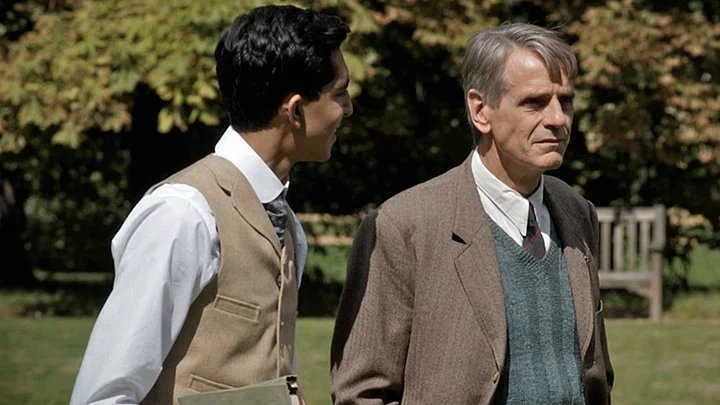(This story was first published on 26 April 2016. It is being reposted from The Quint’s archives on the death anniversary of Srinivasa Ramanujan)
It all began with a series of letters back and forth between two of the unlikeliest of people.
In 1913, mathematician GH Hardy – arguably, a genius himself, received a 10-page letter from a shipping clerk in Madras. He could have ignored it just like the two other mathematicians who received the letter; except, we could have possibly missed out on the mathematical genius of Srinivasa Ramanujan. Perhaps it was the introduction of the letter that captured Hardy’s imagination enough to move him to respond.
“Dear Sir, I beg to introduce myself to you as a clerk in the Accounts Department of the Port Trust Office at Madras on a salary of only £20 per annum. I am now about 23 years of age. I have had no University education but I have undergone the ordinary school course. After leaving school I have been employing the spare time at my disposal to work at Mathematics. I have not trodden through the conventional regular course which is followed in a University course, but I am striking out a new path for myself. I have made a special investigation of divergent series in general and the results I get are termed by the local mathematicians as ‘startling.’”An excerpt from the first letter Ramanujan sent to GH Hardy.
What is to be noted is that the selected 100 or so seductive mathematical theorems he sent to Hardy were not supported by much proof. That’s where his genius – some would say, mere intuition – comes into play. He would go on to tell Hardy that each equation related to God, in some way, and that Goddess Namagiri (his ancestral deity) would put the equations on his tongue when he was asleep. Hardy, a staunch atheist, saw past the religiousness, a superlative mathematician. What ensued remains one of the most significant scientific partnerships till date.
Hardy reached out and encouraged Ramanujan to come to Cambridge. After much persuasion to go against his religion’s theology that forbade crossing the seas, Ramanujan found himself in a university known for breeding prodigies. Under the mentorship of Hardy, which came with its own complications, Ramanujan was able to devise, imagine, prove, disprove – call it whatever you may – mathematical theorems never thought of before. In a memorial speech at Harvard in 1936, Hardy said, “They [Ramanujan’s theorems] must be true, because if they were not true, no one would have the imagination to invent them.”
It has received singular attention as early as 1991, when MIT Professor Robert Kanigel wrote the critically acclaimed biography The Man Who Knew Infinity: The Genius of Ramanujan. Twenty-five years later, Matthew Brown has released a full-length Hollywood feature film by the same name, starring Dev Patel (Slumdog Millionaire) as Ramanujan, and Jeremy Irons (Kafka, The Lion King) as Hardy. Brown succeeds in portraying this friendship beautifully.
They are two men so fundamentally different. Ramanujan was a Brahmin Indian from Madras with no formal education, who believed a formula had no meaning unless it expressed a thought of God. Hardy, on the other hand, was a revered professor at the prestigious Trinity College at Cambridge University and also an avowed atheist. It is an incredible story of how two people were able to overcome their personal differences to form one of the greatest collaborations in the history of mathematics. Ramanujan went on to become the first Indian to be both a Fellow of Trinity College and the Royal Society. While they eventually connected and published great works, there was a cost that came in that Ramanujan’s life ended all too soon. It is a very tragic story.Matthew Brown, speaking to The Indian Express.
The first look is enough to draw the viewer in. Cinematics hots of Madras in the early years of the 20th century, Ramanujan losing himself in a frenzy of numbers that come to him in his dreams, his time at Cambridge under the mentorship of Hardy, and the obvious challenges of being an uneducated, poor Indian genius in England during the First World War.
Differences of culture, religion and race are plenty; the overcoming of them – or not – provides for sufficient drama to gorge on. Below, a scene from Brown’s movie lays out the tension between two people united by their passion for mathematics.
At the Harvard conference, Hardy summarised his relationship with Ramanujan succinctly. Looking back at the years between 1913 and 1919, Hardy said, “It was the one romantic incident in my life.”
“But not in a knickers-shredding sort of way,” Jeremy Irons explained at the screening of the movie at the Toronto International Film Festival, as reported by Metro News. “It’s a romance of a shared passion.”
It is safe to say that the chemistry, the tension and the back and forth initiated by Hardy on mere intuition influenced Ramanujan’s mathematics immensely. Hardy himself was one of the forefathers of pure mathematics in England, and served as a father-figure to Ramanujan; a distant, impersonal father who was the ideal taskmaster and had high expectations of Ramanujan.
Was he the best friend the man from a small town in Madras could have had in a foreign country? Possibly not, comments Kanigel in an interview with The Hindu. But, was it the friendship the world needed to discover the bright spark of the genius who knew infinity? Yes.
